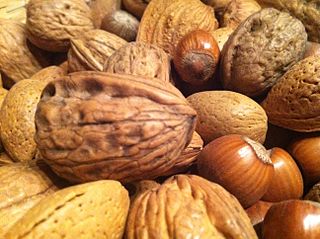Fad diets are making an extreme presence these days. I can’t even buy Epsom salts from the local grocery store without finding the term ‘gluten free’ written on the bag (true story!).
But this isn’t anything new.
Back in the 90’s, dietitians answered lots of questions about the low fat craze, which suggested that removing all fat from the diet would remove all the fat from your hips.
Just like many other fad diets that remove entire food groups or specific foods from the diet, problems are not solved with lasting results. The unwanted weight most likely returns when the diet ends.
Fat fits into several different categories. You have unsaturated fats, saturated fats, and trans fats. One should be the focus of your fat consumption, one should be limited, and one should be entirely avoided. Let me share more about each type of fat:
Unsaturated Fats
These fats can further be broken down into several different categories. You have poly- and mono- unsaturated fats.
Polyunsaturated fats (PUFAs) mean that the fat has a double bond (or is unsaturated with hydrogen) in two or more places. This may not seem like a big deal, but this change in the chemistry of the fat allows for it to lower LDL and HDL cholesterol synthesis. PUFAs can be broken down into two more groups: Omega 3 and Omega 6 fatty acids which differ due to the specific placement of the unsaturated bonds. The body cannot make these fats so they must be consumed through diet. These fats are liquid at room temperature.
Monounsaturated fatty acids (MUFAs) have a double bond in only one location and have their own benefits to offer. MUFAs can increase your HDL (good) cholesterol while lowering your LDL (bad) and total cholesterol. They can also lower your risk of heart disease and stroke and play a role in cell membrane structure, specifically in the nervous tissue. Your body cannot synthesize these fats, so they must be consumed through food. Examples of MUFAs include nut butters, avocado, canola oil, olive oil, as well as many nuts such as almonds, pecans, pistachios and cashews.

Saturated Fats
These fats are saturated with hydrogen bonds, meaning there are no double bonds in the structures. These fats can increase total cholesterol and specifically your LDL (bad) cholesterol. Although saturated fats play a role in the structure of cell membranes, they should be kept at a minimum in your diet as the body has the ability to synthesize the saturated fat that it needs and excess intakes can increase risk of cardiovascular disease. The American Heart Association recommends keeping your saturated fat intake to less than 7% of your calories (or less than 15 grams of saturated fat on a 2,000 calorie diet). Saturated fats are solid at room temperature and are typically found in animal sources of food including dairy. Plant sources of saturated fats include coconut, palm, and palm kernel oils.
Trans Fats
These fats contain a double bond similar to the unsaturated fats, but the configuration varies making it more similar to a saturated fat and allows the fat to become more stable and solid. They are produced through a process called partial hydrogenation, but can be found in small amounts naturally in certain foods. These are linked to increased total cholesterol, increased LDL (bad) cholesterol, and they also have the potential to decrease HDL (good) cholesterol.
Fats play an important role in the diet. They are necessary for producing structuring membranes of cells, cell signaling and absorbing fat soluble vitamins. To improve your diet, replace saturated fats with healthy fats. Remember, that although healthy fats offer many health benefits, they still need to be consumed sparingly to help maintain a healthy body weight. A healthy goal to shoot for with fats is 25-35% of your calories (or about 56-77 grams of fat per 2,000 calories), but remember fat is much more energy dense than carbohydrates and protein and pack about 9 calories per gram of fat.
Resources:
Dietary Reference Intakes for Energy, Carbohydrate, Fiber, Fat, Fatty Acids, Cholesterol, Protein, and Amino Acids: Panel on Macronutrients, Panel on the Definition of Dietary Fiber, Subcommittee on Upper Reference Levels of Nutrients, Subcommittee on Interpretation and uses of Dietary Reference Intakes, and the Standing Committee on the Scientific Evaluation of Dietary Reference Intakes. Institute of Medicine of the National Academies.2005. 422-456.
Duyff RL. American Dietetic Association Complete Food and Nutrition Guide. 3rd ed. Hoboken, N.J.: John Wiley & Sons; 2006. 47-48, 113-125. Print.
Photo Credit:
By Wen95 (Christmas Eve 2011) [GFDL (http://www.gnu.org/copyleft/fdl.html) or CC-BY-SA-3.0 (http://creativecommons.org/licenses/by-sa/3.0)], via Wikimedia Commons




